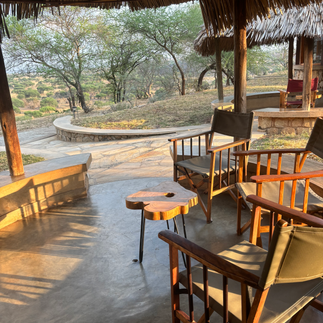Tarangire National Park: A Jewel of Tanzania
- Margaux Delang
- 2 nov 2024
- 3 minuten om te lezen
Tarangire National Park, established in 1970, is one of Tanzania's lesser-known yet most captivating national parks. Spanning approximately 2,600 square kilometers, it is located in the Manyara Region, just a short drive from the more famous Serengeti and Ngorongoro Crater. Its varied landscapes, characterized by rolling hills, acacia woodlands, and expansive savannahs, create a stunning backdrop for wildlife viewing.
Wildlife and Ecosystem

One of Tarangire's most remarkable features is its incredible biodiversity. The park is home to a wide array of wildlife, including large populations of elephants, which can often be seen congregating around the Tarangire River. This river is the lifeblood of the park, especially during the dry season, when it attracts not only elephants but also buffalo, giraffes, zebras, and numerous antelope species.
Predators such as lions, leopards, and cheetahs also roam the park, making it an exciting destination for safari enthusiasts. Birdwatchers will delight in the park’s avian diversity, with over 500 species recorded, including the striking pink-billed lark and the majestic secretary bird.
Unique Features
Tarangire is particularly known for its iconic baobab trees, which can grow to be over a thousand years old. These towering trees not only provide shade but also create a unique and picturesque landscape. The park's varied habitats, including swamps and dry season floodplains, support a rich array of flora and fauna, making it an ecological hotspot.
Cultural Significance
In addition to its natural beauty, Tarangire National Park is adjacent to several Maasai communities. The Maasai are semi-nomadic pastoralists with a rich cultural heritage. Visitors to the park can often encounter these vibrant communities, gaining insights into their traditional lifestyle, customs, and connection to the land.
Visitor Experience
Tarangire National Park is accessible year-round, but the best time to visit is during the dry season, from June to October. During this period, wildlife viewing is particularly rewarding as animals gather around the diminishing water sources.
The park offers various safari options, including guided drives, walking safaris, and night drives, allowing visitors to experience the park in different ways. Accommodation ranges from luxury lodges to more rustic camps, providing options for all types of travelers.
Our experience
We arrived around 11 AM after our drive from Arusha. In hindsight, we could have driven directly from Kilimanjaro Airport to our lodge in Tarangire in about 2.5 hours, but staying the night in Arusha allowed us to relax a bit after the long flight.
So, at 11 AM, we reached the entrance of Tarangire National Park with our driver. We weren't the only ones there. Our driver, Julius, took care of the paperwork needed to enter the park. From there, we set off for a full day of safari.
After a few hours, we stopped at a designated spot to enjoy a packed lunch we had received from our previous accommodation. After lunch, we continued our safari until around 5:30 PM, when we arrived at our lodge. Along the way, we saw an incredible number of elephants, zebras, giraffes, wildebeests, birds, and more.
The next day, we had the opportunity for another full day of safari before heading to our next lodge in the late afternoon.
Accommodation
We stayed for one night at Tarangire Safari Lodge. This lodge is located in the heart of Tarangire National Park and offers beautiful bungalows and tents, a lovely swimming pool, and especially stunning views of the national park. Non-guests can also visit for a day by the pool (for a fee) or enjoy lunch with a fantastic view!
Conclusion
Tarangire National Park is a remarkable destination that showcases Tanzania's natural beauty and wildlife diversity. With its stunning landscapes, rich ecosystems, and cultural significance, it offers a unique experience for those looking to explore the heart of East Africa. Whether you are an avid wildlife enthusiast or seeking a deeper connection with nature and culture, Tarangire promises an unforgettable adventure.









































